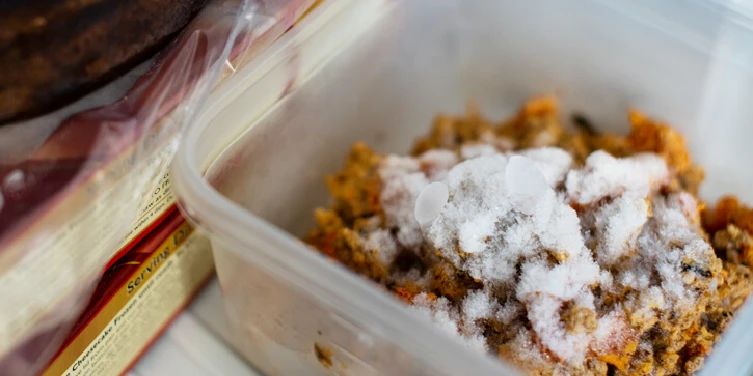What Is Freezer Burn? Causes and Prevention of Freezer Burn

Freezing food is a great way to reduce waste, spend less money on groceries, and save time by preparing meals in advance. Of course, if you’re not diligent, food can go bad in the freezer, too, from a condition called “freezer burn.” Now’s your chance to learn what causes freezer burn and how to prevent it.
What is Freezer Burn?
While freezing food has some amazing benefits, the biggest downside is the potential for freezer burn. However, despite popular belief, the presence of ice doesn’t necessarily signify freezer burn. You can tell if your food has been freezer burned or if it has white splotches or dry areas when you brush the ice crystals aside. These changes to your food make it tough and tasteless.
Eating freezer-burned food won’t hurt you, but it doesn’t taste great, either. It’s disappointing to pull a prized filet mignon from the freezer only to find it has become as leathery and unappetizing as a dog toy. Once the damage is done there’s no undoing it. You can try cutting off portions of dry or discolored areas to salvage the rest of the meat, but if it’s too badly freezer-burned, it might be a total loss.
What Causes Freezer Burn?
When you freeze a piece of food, water molecules inside it turn to ice, which migrates to the surface. This is why you often see ice crystals clinging to frozen food. This dehydrates the item and decreases its quality. Plus, when water molecules escape, oxygen molecules seep in. This causes oxidation, which changes the flavour of the food and dulls its colour.
How to Prevent Freezer Burn
The key to preventing freezer burn is to reduce the food’s exposure to cold air. Here are some effective strategies to try:
- Shop smart: Frozen food at the grocery store is packaged in a way that’s designed to prevent freezer burn. Avoid buying products with torn or damaged wrapping. Look for expiration dates, and choose the one that’s furthest out. Also, opt for packages of food that feel loose in your hand rather than stuck together.
- Vacuum seal your food: If you routinely save leftovers in the freezer, it could be wise to invest in a vacuum sealer, which removes every trace of air from around your food to prevent freezer burn.
- Wrap items in plastic wrap and aluminium foil: To provide an extra layer of protection against chilly air, cover baked goods and meat tightly with plastic wrap or aluminium foil before placing them in a freezer bag. This mimics the effect of a vacuum seal without paying for a special device. You can also put freezer bags inside larger plastic grocery bags with similar results.
- Minimize extra air in bags and storage containers: Press out as much air as you can before sealing zip-top bags. When using hard-walled containers, choose the smallest one for the job.
- Eat frozen food in a timely fashion: With these tips, frozen food should last between three and six months or up to one year if you’re pushing it. To make sure you eat the oldest items first, label food with the date before popping it in the freezer.
Schedule Freezer Repair
Freezer burn isn’t the only thing that can make frozen food go bad. If your freezer isn’t maintaining a low enough temperature, items may start to thaw, or harmful bacteria could begin growing. Call Mr. Appliance to schedule freezer repair if you’re having trouble with frozen food going bad.


